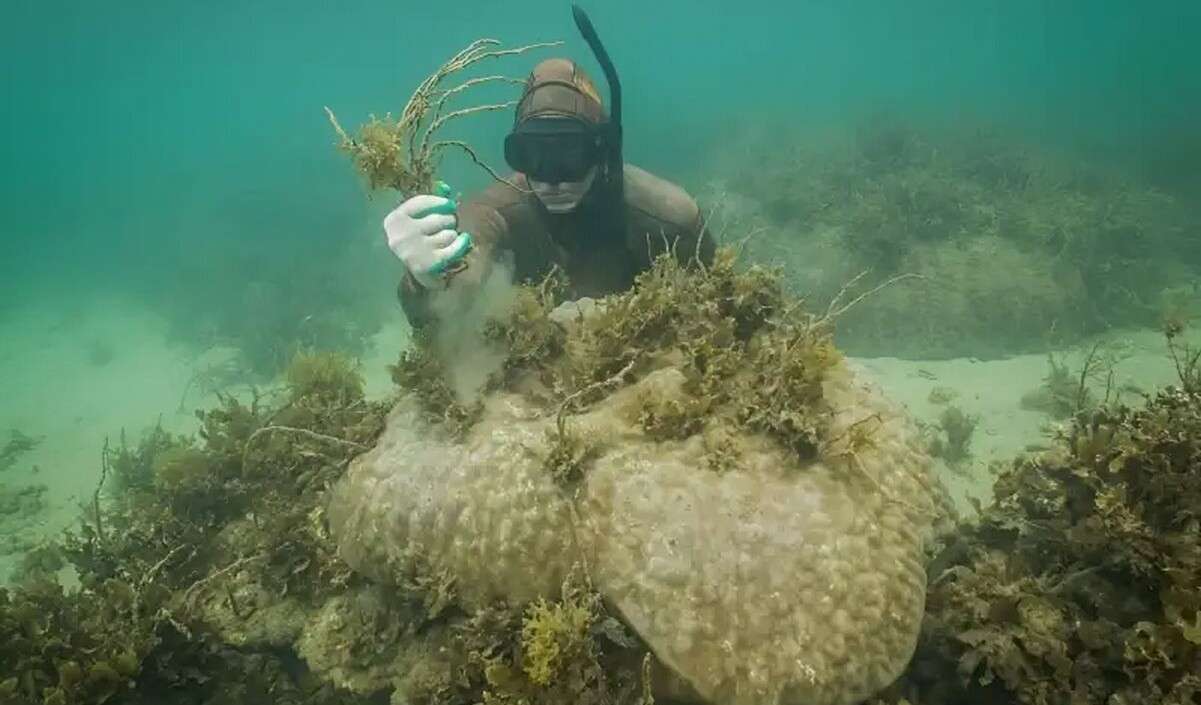NASA Became "Beaver Believers" After Using Satellites To Measure Their Impact On US Rivers
The project started when scientists Jodi Brandt and Nick Kolarik heard about Idaho ranchers getting "beaver fever."

Any good gardener knows what a good de-weeding can do for a vegetable garden. As it turns out, it's much the same for coral reefs.
Following a volunteer "sea-weeding" program launched in Australia, scientists are witnessing compounding coral recovery both in quantity and diversity, and suggest that this simple method has the power to transform degraded reefs overrun by macroalgae.
In a balanced ecosystem, macroalgae is kept in check by the size and health of corals, but as extreme weather events or coral bleaching causes some sections of reef to die, macroalgae has no other neighbor keeping a check on its spread.
Over a period of three years, the joint Earthwatch Institute program led by James Cook University Senior Research Officer Hillary Smith and Professor David Bourne, also at JCU and the Australian Institute of Marine Science, has organized volunteer citizen scientists to help remove macroalgae at two experimental reef sites.
The results of the first three years of work and study have now been published in the Journal of Applied Ecology, and they show a 600% increase in coral recovery rates.
"It's just like weeding your garden," Smith said. "Every time we return, the seaweed is growing back less and less, so this method could provide lasting benefit without requiring endless effort."
The sites were located in the central zone of the Great Barrier Reef at an inshore location called Yunbenun (or Magnetic Island).
The importance of the study, Smith details, is that a lot of reef recovery efforts globally are powered by expensive, high-tech, and experimental solutions. The study hoped to show that manual de-weeding was just as effective, and thereby encourage organizations or nations that lack the tech or funding of a country like Australia to pursue sea-weeding as a way of protecting their corals.
"We have yet to see a plateau in coral growth within these plots at Magnetic Island, which is characterized as one of the degraded reefs on the Great Barrier Reef," Smith said. "We also found an increase in coral diversity, so this method is benefitting a wide range of different coral types."
Smith said her team are now scoping other locations where the sea-weeding technique could be useful, including the Whitsunday Islands, which are home to a different species of predominant seaweed.
They also want to employ them in French Polynesia, Indonesia, and even Singapore, where experts have identified out-of-control macroalgae spread along coral reefs.
SHARE This Undersea Gardening Story With Your Friends…
Be the first to comment